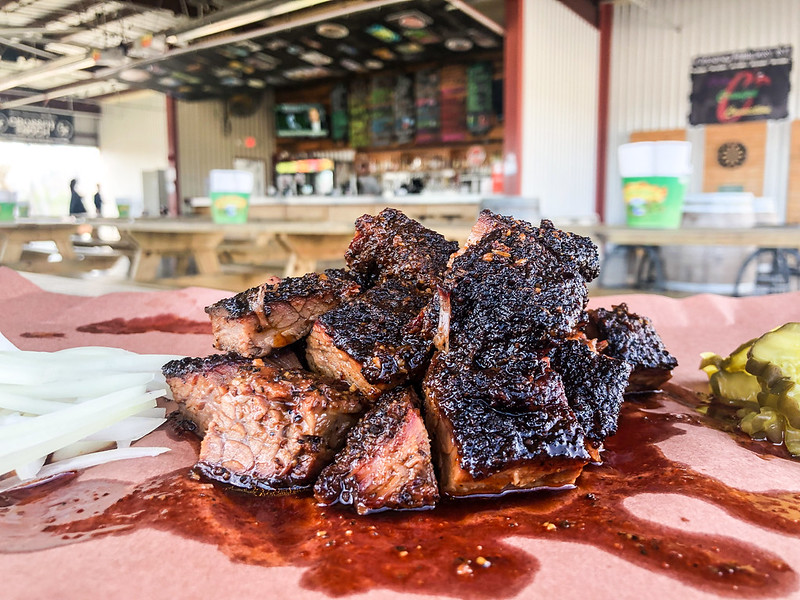Burnt ends are a blank canvas for pitmasters.
The story of American barbecue is often revealed in the way that discarded cuts of meat evolve into the traditional dishes of particular regional styles.
Texas brisket is a classic example. As the beef industry gained momentum in the 1950s and more Americans were consuming meat, specific cuts were cleverly marketed to generate demand. “New York strip,” “filet mignon” and “chateaubriand” were fancy names given to certain cuts to increase their popularity (and price).
Meanwhile, other cuts languished. Though brisket had a long history as the primary ingredient for pastrami and corned beef, it was slow to take hold in Texas barbecue. Shoulder clod was the cut of choice for most Texas barbecue joints before 1950.
Things changed in the 1960s when meat packers in places including Kansas City, Mo., and Chicago centralized the production of beef and began shipping refrigerated cuts of beef in boxes to all corners of the country. Brisket became an inexpensive option, gaining a toehold in Central Texas joints such as Black’s BBQ in Lockhart and Louie Mueller Barbecue in Taylor.
Another example can be found in Kansas City. Kansas City-style barbecue has a long tradition in a town famous for its meat-packing industry. This regional style is known for many different types meat — pork, beef, chicken and lamb. Brisket became a classic dish at historical joints such as Arthur Bryant’s, where it was chopped or sliced and served with a tomato- and molasses-based sauce. “KC Masterpiece” is still one of the most popular barbecue sauces you can find in any supermarket.
Because of an anatomy in which the ends are thinner than the main muscle, cooked briskets often yield extra-crispy bits on the outside. Early pitmasters would slice those off and discard them, thinking no one would want to eat those fatty, crispy nuggets of beef.
But then pitmasters decided to transform them. Often credited to the pitmasters at Arthur Bryant’s, once discarded crispy outer bits of brisket were combined with a tomato-and-molasses sauce and served as a separate dish. Thus, Kansas City-style “burnt ends” were born.
Burnt ends have been slow to catch on in Texas barbecue. Though joints such as Louie Mueller Barbecue still offer free burnt ends or “tasters” to customers waiting in line, you rarely see them as a stand-alone option on menus.
But with the rise of craft barbecue, burnt ends have become something of a blank canvas for the creativity displayed by today’s chef-pitmasters.
Houston spots including Tejas Chocolate & BBQ, Blood Bros. BBQ and Killen’s Barbecue (among others) offer traditional and creative beef burnt ends as specials.
One thing to keep in mind about contemporary burnt ends: They’re not really “burnt ends.” You can get only so many crispy tips off the two ends of a brisket, so today’s burnt ends are the “point” or fatty section of the cooked brisket cut into cubes. These cubes are then tossed into a sauce and served as-is, or placed back on the smoker so the sauce thickens and caramelizes.
Tony Faour of BBQ Godfather in Magnolia has made a name for himself specializing in Texas-style burnt ends. He uses only the most highly marbled half of a prime-grade brisket’s point. The brisket’s smoky, crispy bark combined with his own sweet, salty and peppery sauce makes for one of the best versions of burnt ends in the Houston area.
Faour is also known for incorporating ingredients from his Italian heritage into his recipes, and the brisket’s spice rub has a uniquely Italian character.
But therein lies the (other) rub. You can produce only so many cubes of brisket from a small part of one section of the muscle. Faour is limited in the number of burnt ends he can make on a daily basis. He often sells out early in the day.
Burnt ends are a classic example of how the most famous barbecue dishes go from something that literally can’t be given away to a dish so popular that it’s hard to keep up with demand.



